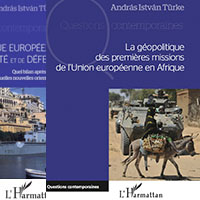You are here
SWP
»Global Migration Governance« im Zeitalter gemischter Wanderungen
Flucht, Migration und Entwicklung sind eng miteinander verknüpft. Die Entwicklungswirkungen globaler Wanderungsbewegungen hängen von deren politischer Gestaltung ab, und entwicklungsfördernde Rahmenbedingungen erfordern eine intensive und verbindliche Kooperation mit den Partnerländern der Entwicklungszusammenarbeit. Allerdings ist die internationale Zusammenarbeit in der Flüchtlings- und Migrationspolitik – im Englischen zusammenfassend als „Global Migration Governance“ bezeichnet – bisher nur schwach ausgeprägt. Derzeit stehen wichtige Weichenstellungen bezüglich der inhaltlichen und institutionellen Weiterentwicklung dieses Bereichs an. So enthalten die 2015 verabschiedeten Sustainable Development Goals (SDGs) der Vereinten Nationen migrationspolitische Ziele und Indikatoren, die für alle Staaten bindend sind. Zudem hat die Staatengemeinschaft im September 2016 beschlossen, innerhalb von zwei Jahren zwei globale Abkommen zu Flucht und Migration zu erarbeiten. Beide Abkommen werden sich auf das internationale Institutionengefüge und die Aufgabenteilung zwischen VN-Organisationen auswirken; dies betrifft unter anderem den Hohen Flüchtlingskommissar der Vereinten Nationen (UNHCR), die Internationale Organisation für Migration (IOM) und die Internationale Arbeitsorganisation (ILO). Und schließlich ist absehbar, dass bereits bestehende zwischenstaatliche Konsultationsforen im Bereich Migration weiter an politischem Gewicht gewinnen werden. Aus entwicklungspolitischer Perspektive bedarf es einer normativen und institutionellen Neuordnung der globalen Migrationspolitik; dabei hat sich auch die Bundesregierung klar zu positionieren.
A Permanent State of Sanctions?
Sanctions seem to have become a permanent element in relations between the EU and Russia. They have contributed to curbing the war in Donbas but are not capable of forcing Russia to return Crimea to Ukraine and implement the Minsk agreements. In 2017, consensus within the EU on sanctions against Russia is more fragile than it has been previously. As a result, therefore, the EU needs to consider now what strategic steps it should take next.
Keine Konkurrenz für den König
In Marokko definiert der König nach wie vor den politischen Spielraum. Dabei legt der »Palast«, eine gängige Chiffre für den König und sein Patronagenetzwerk, seinem stärksten Gegenspieler, der moderat islamistischen Partei für Gerechtigkeit und Entwicklung (PJD), immer mehr Steine in den Weg. Dies hat zuletzt die langwierige Regierungsbildung nach den Parlamentswahlen vom Oktober 2016 gezeigt. Auch der Druck auf zivilgesellschaftliche Kritiker steigt stetig. Indem das Versprechen politischer Reformen Schritt für Schritt durch ein Modernisierungsversprechen ersetzt wird, droht der relativ inklusive Charakter des »marokkanischen Modells« verlorenzugehen – damit entfiele zugleich ein wichtiger Faktor für den inneren Frieden des Landes. Dass Marokko den Fortschritt nicht zurückdreht, der mit den Reformen der letzten Jahrzehnte erzielt wurde, liegt daher auch im Interesse europäischer Außenpolitik.
Iran und Russland
Das iranisch-russische Verhältnis hat sich qualitativ verändert. Spätestens seit die Islamische Republik im August 2016 ihren Luftstützpunkt Nojeh für russische Kampfflugzeuge zur Verfügung stellte, ist deutlich geworden, dass die bilateralen Beziehungen in eine neue Phase eingetreten sind. Die Unterstützung beider Länder für die syrische Regierung hat die Frage aufgeworfen, ob das iranisch-russische Bündnis eine grundlegende geopolitische Verschiebung im Nahen und Mittleren Osten einläutet oder lediglich eine Zweckgemeinschaft auf Zeit darstellt. Charakter und Intensität russisch-iranischer Kooperation haben sowohl sicherheitspolitische Auswirkungen als auch Konsequenzen für den Handlungsspielraum Deutschlands und der EU in der Nahostregion.
Wie wird in Iran die Frage einer stärkeren Anbindung an Russland diskutiert und wie werden die Aussichten auf eine »strategische Partnerschaft« beurteilt? Zwar weichen Irans und Russlands geopolitische Interessen in der Region voneinander ab, schließen sich aber nicht gegenseitig aus. Dadurch ergeben sich für beide Seiten Anknüpfungspunkte. Trotz anhaltenden Misstrauens gegenüber Moskau ist Teheran daher fest entschlossen, die bisherige Zusammenarbeit deutlich auszubauen. Unter der derzeitigen iranischen Führung ist eine prioritäre Partnerschaft mit Russland, die fallbasierte Allianzen auf Zeit ermöglicht, die wahrscheinlichste Option. Deutschland und die EU müssen sich darauf einstellen, dass Teheran im Nahen und Mittleren Osten auch weiterhin machtpolitische Bündnisse mit Moskau eingehen wird, deren geopolitisches Gewicht nicht ignoriert werden kann.
Sanktionen als Dauerzustand?
Sanktionen scheinen zum Dauerzustand in den Beziehungen zwischen der EU und Russland geworden zu sein. Sie haben zur Eindämmung des Krieges im Donbas beigetragen, sind aber nicht geeignet, die Rückgabe der Krim an die Ukraine und die Umsetzung der Minsker Vereinbarungen zu erzwingen. Der EU-Sanktionskonsens ist 2017 weniger stabil als zuvor. Deshalb muss in der EU frühzeitig und strategisch über das weitere Vorgehen nachgedacht werden.
European Defence in View of Brexit
The United Kingdom (UK) Prime Minister Theresa May’s official request, on March 29th, to leave the European Union (EU) will change the way European countries organise their defence policies. Europeans have always managed their defence via various channels: nationally, in the EU, through NATO and in smaller formats. Brexit will change the way these formats function and how they interact. The effect on the EU’s Common Security and Defence Policy (CSDP) will be limited. NATO might benefit from a greater UK commitment, as can smaller formats. The result will be greater fragmentation in European defence, which risks weakening the Europeans’ political and military capacity to act.
European Defence in View of Brexit
The United Kingdom (UK) Prime Minister Theresa May’s official request, on March 29th, to leave the European Union (EU) will change the way European countries organise their defence policies. Europeans have always managed their defence via various channels: nationally, in the EU, through NATO and in smaller formats. Brexit will change the way these formats function and how they interact. The effect on the EU’s Common Security and Defence Policy (CSDP) will be limited. NATO might benefit from a greater UK commitment, as can smaller formats. The result will be greater fragmentation in European defence, which risks weakening the Europeans’ political and military capacity to act.
Israel on the Road to the Orient?
The Israeli debate sparked by the manslaughter trial of an IDF soldier over an incident in Hebron in March 2016 reveals an identity dimension as well as an ethical one. The perpetrator – convicted of shooting a Palestinian assailant in the head when he was already lying motionless on the ground – was an “Oriental” Jew, a so-called Mizrahi, thus inserting the event into the context of the internal conflict between Mizrahim and Ashkenazim, the Jews of European origin. In recent years the pendulum has swung towards the originally highly marginalised Mizrahim – who now assert political and cultural leadership and challenge Israel’s “Western” identity. Some of them, like the new activist group Tor HaZahav, go as far as openly describing Israel as part of the Middle East, although without elaborating what that would mean concretely. The paradigm shift associated with these developments thus remains an intra-societal phenomenon for the time being. Foreign policy implications, for example for the Israeli-Palestinian conflict or relations with Europe, are not discernible at this stage.
Cuba “Updates” Its Economic Model
Following the thawing of relations with the United States under Obama, Cuba is now seeking closer integration into the global economy through a programme of “guidelines” for updating the country’s economic model adopted in 2011. The central goals are increasing exports, substituting imports and encouraging foreign direct investment in order to improve the country’s hard currency situation, increase domestic value creation and reduce dependency on Venezuela. The guidelines also expand the space for private business activity, for example legalising “self-employment”. In this context, Cuba also wants to strengthen economic relations and political dialogue with the EU – its most important trading partner after Venezuela – on the basis of the EU-Cuba Dialogue and Cooperation Agreement of 2016. But the broader perspective for cooperation will depend heavily on whether Cuba succeeds in advancing and consolidating its economic reforms. The economy remains tightly state-managed, creating disincentives for internal actors and external investors alike. The restrictions arise from the political/military elite’s wish to retain control over the development course and secure its own power base. As such, great tensions exist between the political situation and the government’s external economic objectives. Cuba’s agreements with international partners will only bear fruit if the internal framework can be improved. The EU and Germany should use the political dialogue to encourage Havana to pursue the requisite reforms.
China – Japan – South Korea
China, Japan and South Korea are the largest economies in East Asia and, as such, play a decisive role in the region’s prosperity and security. Their relations with each other, however, are increasingly marked by tensions in the absence of a regional organisation or institution playing a stabilising role. This study considers a constellation that has so far received little attention, namely the cooperation between these three states, which began in the late 1990s and has since established itself as an independent format. The study’s central question is whether this trilateral cooperation can bring forth a new model of interaction in Northeast Asia, or whether it only confirms and reproduces existing (and predominantly negative) trends. The research has two focal points: it analyses developments within the three sets of bilateral relations, and provides a systematic overview of the extent of this trilateral cooperation to date. It shows that tensions within the Northeast-Asian triangle are caused not only by historic, territorial and maritime conflict, but also by the increasing competition between the US and China for primacy in the Asia-Pacific. To date trilateral cooperation between Beijing, Tokyo and Seoul therefore has a mixed but overall modest balance sheet, especially in security policy. The format is nevertheless significant in that it provides an institutional framework for exchanging views and keeps open channels of communication below “high politics”, even in times of heightened bilateral tensions.
Russland und der Nordkaukasus im Umfeld des globalen Jihadismus
Russland tritt als Protagonist internationaler Terrorismusbekämpfung auf und begründet damit seinen Militäreinsatz in Syrien. Vom Beginn des zweiten Tschetschenienkriegs 1999 bis ins Jahr 2013 sah es sich mit 75 größeren Terroranschlägen auf seinem Staatsgebiet konfrontiert, die Hunderte Zivilistinnen und Zivilisten das Leben kosteten. Verantwortlich dafür war eine über Tschetschenien hinausgehende Aufstandsbewegung im Nordkaukasus. Aus dieser Region kommen in den letzten drei Jahren zwiespältige Nachrichten. Einerseits heißt es, der bewaffnete Untergrund sei deutlich geschwächt und zersplittert. Andererseits verlagerte sich der regionale Jihad, der sich als »Kaukasus-Emirat« manifestiert hatte, auf die globale Ebene, weil Kämpfer aus der Region sich islamistischen Milizen in Syrien und Irak anschlossen. Von dauerhafter Stabilität ist der Nordkaukasus wohl noch entfernt. Das zeigte zuletzt eine Serie von Anschlägen auf Sicherheitskräfte in Tschetschenien im Dezember 2016 und im März 2017. Zudem stellt sich für Russland, seine Nachbarn im Kaukasus und in Zentralasien wie auch für Europa die Frage, wie viele Jihadisten aus dem nun schrumpfenden IS-Territorium in ihre Heimatregionen zurückkehren werden.
Differenzieren und Kooperieren
Die vier Länder der Visegrád-Gruppe (Polen, Slowakei, Tschechien und Ungarn) haben sich aktiv in die Diskussion über die künftige Gestalt der Europäischen Union eingeschaltet. Sie haben bereits unter dem Eindruck des Brexit-Votums und des informellen Gipfels von Bratislava im September 2016 zu gemeinsamen Positionen gefunden und nun im Vorfeld der Jubiläumserklärung von Rom ihre Präferenzen für die Reform der EU artikuliert. Zwar betonten sie bei dieser Gelegenheit zum wiederholten Male ihre Einigkeit, doch es kommen weiterhin deutliche Meinungsunterschiede zum Vorschein, sowohl hinsichtlich der künftigen Konstruktion der EU als auch in wichtigen Sachfragen. Deutschland sollte ungeachtet dieser Diskrepanzen engen Kontakt mit der Gruppe halten und dabei nach der Devise »variabler Differenzierung« kooperieren.
Unter der schwarzen Fahne
Im Februar 2017 ermordete die primär im Süden der Philippinen aktive islamistische Abu-Sayyaf-Gruppe (ASG) einen entführten deutschen Segler. Dieses Ereignis verschaffte einer Konfliktregion kurzzeitig Aufmerksamkeit, die ansonsten in der internationalen Öffentlichkeit weitgehend vergessen ist. Die ASG, die mit der Entführung Lösegeld erpressen wollte, machte nach Ablauf der gesetzten Frist ihre Drohung wahr und enthauptete ihr Opfer. Das Vorgehen der Abu Sayyaf entspricht einer Sicht auf diese Gruppe, die in großen Teilen der philippinischen und internationalen Öffentlichkeit dominiert: Sie gilt als kriminelles Netzwerk, das eine radikale und militante Islaminterpretation propagiert, mit der sie ihre kriminellen Aktivitäten quasi legitimiert. Dabei wird übersehen, dass sich in den letzten Jahren signifikante Teile der Abu Sayyaf ideologisch ebenso radikalisiert haben wie andere militante Gruppen, die im Süden der Philippinen operieren. Mittels eines Treueschwurs (bai’ah) haben sie sich dem »Islamischen Staat« (IS) angeschlossen. 2016 wurde überdies einer der Anführer der ASG, Isnilon Hapilon, offiziell zum Emir aller auf Mindanao aktiven IS-Kämpfer ernannt. Die über die letzten 24 Monate hinweg auf Mindanao zu beobachtenden Veränderungen der ideologischen Ausrichtung und des strategischen Verhaltens diverser jihadistischer Gruppen legen den Schluss nahe, dass sie sich derzeit unter dem IS-Banner revitalisieren.
Trump und der »Asia pivot«
Ein Zwischenfall im Südchinesischen Meer hat schon vor der Amtseinführung von US-Präsident Donald Trump zu einer ersten Belastungsprobe der neu auszutarierenden sino-amerikanischen Beziehungen geführt: China hatte im Dezember 2016 nahe dem Scarborough-Riff eine Unterwasserdrohne der US-Marine beschlagnahmt. Der designierte US-Außenminister Rex Tillerson versprach daraufhin bei seiner Anhörung im Senat, Pekings Machtansprüchen mit »klaren Signalen« entgegenzutreten. Damit drohte sich ein Konflikt zu verschärfen, in dem die Obama-Administration vorsichtig und zurückhaltend agiert hatte. Aber noch lässt sich keine Strategie für den asiatisch-pazifischen Raum erkennen. Statt grundlegendem Wandel gilt im Rahmen maritimer Sicherheit offenbar eher Kontinuität. Die Streitkräfteplanung ist von der einfachen Politik des »more of the same« geprägt. Während vieles unklar bleibt, erweist sich lediglich der auf China gerichtete Fokus der US-Außenpolitik als beständig.
The Right Moment to Reform the EU Budget
The High Level Group on Own Resources (HLGOR) chaired by Mario Monti presented its final report on 17 January 2017. It contains recommendations for reform of the European Union’s own resources system. In October 2016, as part of its mid-term review of the EU’s Multiannual Financial Framework (MFF 2014-2020), the European Commission marked starting points for reforms on the expenditure side of the EU budget. Now, the EU is turning its attention to the revenue side. The European Commission must draw up its proposals for the next MFF, applicable after 2020, by the end of 2017. The debate on a comprehensive reorganisation of European budget policy will then begin to gather speed.
»Hard Power« statt »Soft Power«
Die neue US-Regierung hat am 16. März eine »Blaupause« für den Haushalt der USA im Jahr 2018 vorgelegt, die vor allem auf militärische Stärke setzt. Die darin enthaltenen Eckpunkte, die lediglich den ersten Anstoß für das Ringen mit dem Kongress bilden, wurden bislang nicht in eine sicherheitspolitische Strategie eingebettet. Dennoch hat Trump damit erstmals seine Prioritäten schwarz auf weiß formuliert und mit konkreten Zahlen unterlegt. Zusammen mit anderen Weichenstellungen, die seit Beginn seiner Amtszeit erfolgt sind, zeichnen sich die Konturen der künftigen Sicherheits- und Verteidigungspolitik der Trump-Administration nun klarer ab. Für Deutschland und die anderen europäischen Nato-Staaten bedeutet dies, dass sie nicht nur Forderungen der USA gegenüberstehen, mehr Geld für ihr Militär auszugeben. Sie werden auch Lücken schließen müssen, welche die USA in der zivilen Sicherheitspolitik und bei internationalen Organisationen schlagen.
Afrika zwischen G20 und Marshallplänen
Im Jahr 2017 steht Afrika weit oben auf Europas und vor allem Deutschlands politischer Agenda. Gegenwärtig ändern sich die Rahmenbedingungen der Beziehungen zu Afrika. Gründe dafür sind, dass die USA sich stärker auf sich selbst konzentrieren, Chinas Wirtschaftswachstum sinkt und einige Wirtschaftspartnerschaftsabkommen der EU mit regionalen Gemeinschaften in Kraft treten. Nicht nur ist Afrika Schwerpunkt der deutschen G20-Präsidentschaft. Diskutiert wird auch über »Marshallpläne«, die der Bundesminister für wirtschaftliche Zusammenarbeit und der Präsident des Europäischen Parlaments vorgeschlagen haben. Diese Initiativen eröffnen Europa und Deutschland die Chance, Grundlagen der Zusammenarbeit mit Afrika auszudifferenzieren.
Ohne die kurdische PYD keine Lösung für Syrien
Russland hat bei den Syrien-Gesprächen im kasachischen Astana im Januar, Februar und März 2017 die Federführung übernommen und den Gesprächspartnerinnen und -partnern Verfassungsvorschläge unterbreitet. Damit bekräftigt Moskau seinen Anspruch, Syriens Nachkriegsordnung maßgeblich mitzugestalten. Gleichzeitig legt die neue US-Administration ihren militärischen Kurs für Syrien fest. Zum Ärger Ankaras berücksichtigen sowohl die russische Initiative als auch die US-Pläne Interessen der nordsyrischen Kurdenpartei PYD mit, die beim Kampf gegen den »Islamischen Staat« (IS) eine entscheidende Rolle spielt.







